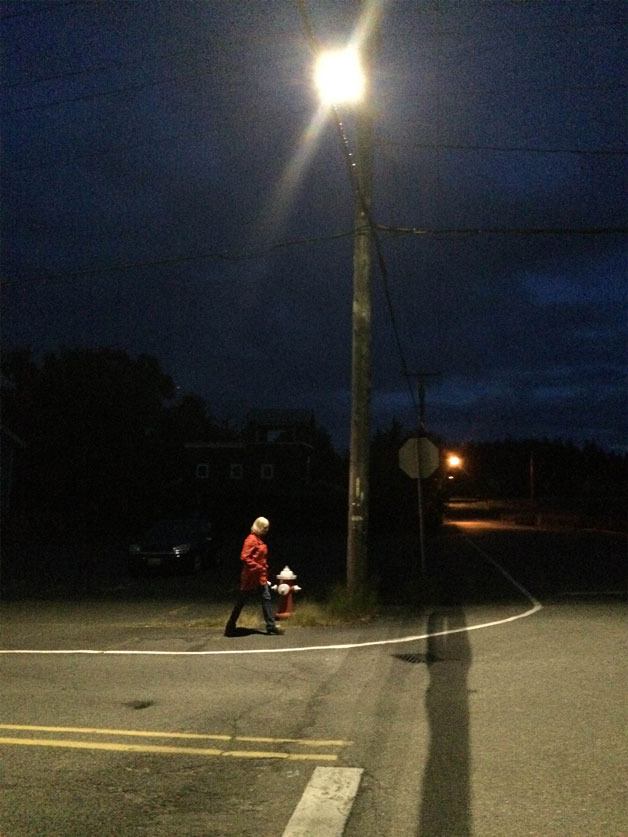One of Langley’s two LED test bulbs installed over a week ago on Third Street and Park Avenue may be too bright for the city and potentially dangerous for its inhabitants.
Meant to gauge the public for acceptance, a 4,000-Kelvin bulb has drawn complaints from residents due to potential health risks and light polluting people’s homes. Its counterpart, a 3,000-Kelvin bulb, may be a better fit, Mayor Tim Callison said. The city is considering replacing nearly all of the city’s 98 traditional sodium streetlight bulbs with light emitting diodes, also known as LEDs, in an effort to reduce power consumption and increase longevity.
This effort is focused on residential areas, as 4,000-Kelvin bulbs were installed on Second Street two years ago during a rennovation project.
The test bulbs have been on display for a little more than a week, which has given residents a chance to compare the two. The test bulbs will remain up until July 15, after which data will be taken to the city council for review.
“When people take the time to compare, the 3,000 Kelvin bulb is certainly considered as much more favorable,” Callison said.
One advocate against 4,000 Kelvin bulbs is Useless Bay resident Joann Quintana. She cited information from a statement by the American Medical Association in a recent letter to Langley officials. The association warned cities considering installing LEDs that high-intensity LEDS, such as the 4,000-Kelvin bulb, have several detrimental effects, such as a decrease in visual acuity, suppressed melatonin, impaired daytime functioning and obesity. While the light appears white to the naked eye, a large amount of blue light is emitted which creates worse nighttime glare than traditional bulbs. Studies also suggest that the high-intensity lighting can have negative and deadly effects on wildlife, according to the International Dark-Sky Association.
The association recommended outdoor or street lighting should have a color temperature no greater than 3,000 Kelvin. Spectral content of light from a source is measured in color temperature. Non-harmful LED lighting that would be fit for Langley, Quintana said, would emit in the red spectrum.
While Quintana doesn’t claim to be an expert on the issue, she took a stand when she learned the risks.
“It’s disrupting natural rhythms that wildlife have,” Quintana said. “Our world evolved by having daylight and darkness. We’re creatures of a world that has day and dark, and when you disrupt that, there are all these biological rhythms that get disrupted.”
Quintana applauded the city for treading lightly while considering the installation of new LED lighting, but urged them to opt for bulbs that are not harmful to humans or wildlife.
“My biggest concern is that the city will act too quickly before they understand the issues throughly,” she said. “A lot of cities have done this, including Seattle and New York City, and replace street lamps with energy-saving LEDs. But they get the wrong ones.”
Quintana said she hopes the city will seek advice from the International Dark-Sky Association, review the American Medical Association’s guidelines and select LEDs that emit a different light spectrum.
“Those kind of lights are still LEDS, save energy, but they don’t expose us to the kind of light that is harmful,” Quintana said.
Callison said the city may install more 4,000 Kelvin bulbs in the downtown area, adding to the nearly dozen that are currently installed on Second Street.
“In gloomy and winter months, we’d like to have as much light as possible,” Callison said.



